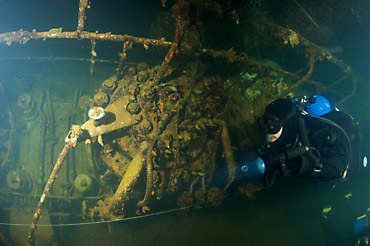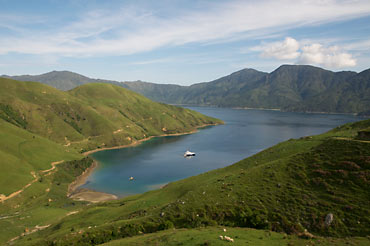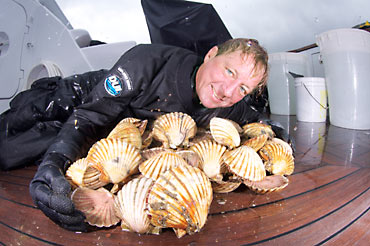
choose an article
|
|
This tale comes from Soviet Russia, so naturally it's a tragedy. And a tragedy born out of tragedy at that. Mikhail Yuryevich Lermontov was a Romantic poet. He was killed in a duel by a fellow army officer who took offence at one of his jokes. And as if that wasn't tragic enough, the protagonist waited for two days after the insult to face off at the foot of a mountain. Neither man backed down, and Lermontov was killed with the first shot. It was 1841. He was just 27. Fortunately for posterity, Russian literature, and this particular story, Lermontov had already penned his signature work, "Death of a Poet". Ironically this was not written as a prophecy, but an angry young man's response to the demise of his fellow rhapsodist, Pushkin. Who had been shot and killed. In a duel. You can't really describe Pushkin's death as 'senseless', because it was Pushkin's twenty ninth, and final duel. Pushkin was an accident waiting to happen. Bravado does that to a man. Bravado and vodka. Bravado, vodka and legalised duelling. Thank the stars they invented Playstation. *** In 1972, Mikhail Lermontov was resurrected in a shipyard in Wismar, East Germany. His literary legacy ensured his name was given to the the last of five 'poet' ships* for the Soviet Union's Baltic Shipping Company. Originally a liner on the Leningrad to New York run, the Lermontov was converted to cruising in pursuit of the rouble. This role reversal may also have been somewhat 'forced', due to President Reagan's decision in 1980 to ban Soviet ships from US waters; a political tit-for-tat in response to the Russian invasion of Afghanistan. Whatever the reason, the Mikhail Lermontov was suitably groomed to welcome 700 plus of the cruising set with a US$15 million refit. Cabins now boasted en suite facilities, the public areas were lavishly refurbished; there was the Bolshoi Lounge, the Neptune Bar, the Leningrad Restaurant, a gym, sauna, and spa. The exterior gleamed brilliant white from bow to stern under a coat of fresh paint. With a star on the prow, and a hammer and sickle on the funnel, she set sail. The crew spoke of a happy ship with a family atmosphere. Passenger ships compatible with the Lermontov retain a certain style. They evoke a 'Golden Age of Travel' while retaining an intimate atmosphere lost on modern gargantuans.
So Sunday 16th February 1986 saw the Lermontov cruising New Zealand's South island, 735 passengers and crew commanded by Captain Vladislav Vorobyev. She departed Picton for the Marlborough Sounds, under the supervision of the local pilot, Captain Don Jamison, who treated the mainly elderly Australian passengers to a sight seeing tour of the picturesque coastline, complete with a running commentary over the public address. The ship hugged the land. Passengers and crew recalled the vessel being within 30m at times, 'close shaves', for a 20,000 tonne vessel. Then, at Cape Jackson passage, with Captain Vorobyev still below, Jamison impulsively took a short cut, darting the Lermontov, now making 15 knots, between the lighthouse and the headland, rather than the circuitous route around the outside. Just after 5.30pm the port side hull was ripped open on the reef. The gash was only half a metre wide, but ran for some 12m, puncturing three watertight compartments. The captain returned to the bridge, immediately resumed command, and ordered the watertight doors to be shut. But the wound in the belly was fatal, and after assessing the damage, Vorobyev calculated they only had 4 hours afloat at most. The crew informed the passengers that dinner would be delayed and the wine tasting currently in progress would continue. So the band played on, and there was no sense of panic, at least until the glasses started to slide off the table. Initially the Lermontov issued a distress call. The tanker 'Tarihiko' responded. Then came a second call, bizarrely countermanding the first. Thankfully Captain Reedman on 'Tarihiko' chose to ignore the order to stand down, and pressed ahead to the rendezvous.
As the weather deteriorated the Lermontov continued to ship water at an alarming rate. Radio communications between Wellington - where the rescue efforts were being co-ordinated - and Port Gore, where the drama was unfolding and reputations were unravelling - were unreliable and confused. Vorobyev decided to run his stricken ship aground in an attempt to save her, but by 7.15pm the electrics had failed and the engines drowned. Subsequently powerless, unable to steer, sinking at bow and developing a list, the Russian captain knew he had no chance of beaching, so consequently had no choice other than to abandon ship and save everyone aboard. Fortunately for the beleaguered cruise ship, rescue efforts were also being co-ordinated by the Baker family, who'd physically crossed country from their station to Port Gore, to witness the predicament first hand. It became immediately apparent to them that the loss of the Lermontov was a matter of 'when' rather than 'if'., so they mustered the experienced local skippers of Marlborough Sounds to come to her aid. With the liner sickly listing twenty degrees to starboard, the crew started shepherding the elderly passengers from the upper deck down to the waiting lifeboats, the tilt rendering the rope ladders too short for those agile enough to use them.
By 9.30pm, the car ferry "Arahura", from the Picton to Wellington service, also arrived, and was joined by Navy patrol boat, HMNZS Taupo. By now Lermontov was pitch black and dead in the water, a barely floating corpse attended by a cortege of a dozen smaller craft who had responded to the Baker's timely call. Crew members searching for any remaining passengers were traversing corridors with one foot on the floor and one on the wall, such was the extent of the list. At a little before 10.30pm, the ship ceased to struggle and went down by the bow. Air rushed out, bulkheads blew under the pressure, and eye witnesses described the tremendous noise of something in terrible pain, then a ferment; massive bubbles and debris erupting on the surface. After that, not a sound. *** The passengers were taken to Wellington to recover. Some had broken bones, some suffered hypothermia. Their average age was 70, but all were rescued. They'd been extremely fortunate, given that some lifejacket fabric disintegrated to the touch, and that the lifeboats were in poor condition. Some were totally unseaworthy. Some had been painted in situ, and were stuck fast. Pilot Jamison was spirited away. The crew were flown back to Russia, minus a refrigeration engineer who was never recovered. He was the sole fatality of the disaster. His widow and young son buried a uniform in a symbolic grave. |
published in Sport Diving Magazine Naturally the morning after the night before dawned picture postcard perfect. Hundreds of deck chairs bobbed round the bay and many households in the Sounds duly appropriated them for their own verandas. Down on the virgin wreck, divers recovered the ship's safe, and the oil and fuel was pumped out to negate any environmental hazard. Then the souvenir hunters moved in. Cutlery, crockery, curtains and bar stools made their way to the surface, and one intrepid diver walked off with the ultimate trophy: the hammer and sickle decal from the funnel. While the waters may have closed over the Lermontov for good, questions still remained. Few were answered at the subsequent enquiry, which was perceived as a bit of a white wash. Captain Jamison, the man in charge at the time of the actual impact, stated that he believed there was more clearance through the channel than there actually was, and he'd taken a short cut on the spur of the moment. He also claimed he was exhausted due to overwork. However some observers felt Jamison had taken the riskier course because he wanted to make a name for himself. No action was taken against Jamison. New Zealand simply didn't have laws in place at that time to secure a conviction. Ultimately they wrote Jamison a strongly worded letter, suggesting he surrender his master's ticket, which he duly complied with. Even bringing a charge of endangering the ship and crew was dropped, because the maximum penalty of $1000 and two years in jail couldn't justify the expense of returning the Russian crew to New Zealand to testify. The Russians held their own enquiry, and found the pilot guilty in his absence. With Jamison out of their reach they focused on the crew. The Lermontov's navigator received four years in prison, and Captain Vorobyev was demoted to a desk until finally becoming master of a small freighter plying the African coast. As for Jamison, he eventually reapplied for his master's ticket and it was returned to him.
As if the whole affair wasn't surreal enough, there was a suggestion that the sinking was an act of counter espionage; that the Soviet cruise ship was actually spying. In 1984, the New Zealand government made a big play of being 'Atomkraft? Nien Danke!', barring all nuclear powered, or nuclear armed ships, from their ports. This didn't go down at all well with the sabre-rattling US administration. To put events in context, President Reagan had made his infamous 'Evil Empire' speech in March 1983. The Americans just weren't digging the New Zealand vibe of how Green and Beautiful Everything Could Be. Coincidentally the CIA had their Southern Hemisphere intel base at Blenheim, just a crow flight from Picton. And the Lermontov had the capacity to act as a spy ship. There were reportedly KGB agents on board to keep an eye on the crew. It certainly made a good conspiracy theory for divers enjoying a port and stilton supper with a Dirk Pitt ® novel for company. But as Lermontov specialist Brent McFadden told me; "Purposely sinking a ship like this would be near impossible. They have enough trouble sinking ships under controlled conditions. It's a local pilot showing off to other coastal skippers, trying to prove he could get between the light house and headland. Which of course he did. It just sunk on the other side." *** Brent has a point. And 1500 plus dives on the wreck over the last twenty five years to back it up. He runs 'Go Dive' out of Picton, and if you're thinking of diving the Lermontov, he's now the sole 'one stop shop'. Due to its remote location off the South Island, 'Go Dive' accesses the wreck with a two and a half hour road trip, overnighting at their Lermontov Lodge. But once there, it's just a five minutes sprint on the dive boat. The Lodge is a forward base set up for recreational and tech divers, with twin sets, rebreather and Nitrox. The accommodation houses 12 in 4 bunk style rooms, with all food and bedding supplied. There is no cellphone or internet coverage, but you'll be able to watch a documentary on the wreck, and get set up for two or three dives the following day. 'Go Dive' can offer trips from 24 hours to 5 days, and there is training in dry suit use, if, like us, you're hardcore Martini divers. A dry suit is recommended, because although the wreck lies in very calm waters, it can get nippy. Water temperature can go down to 12C in September, from a relatively balmy 18 in February. On the flip side, visibility is generally best in September to November, when it can reach 25m plus. When it heats up from mid December to May, visibility drops to 5m to 8m. There's the possibility of varying visibility on the same dive between bow and stern, and visibility can change during the course of the day, but Brent says the interior has good clarity throughout the year. Lermontov, twin buoyed, at stern and pilot house, lies on it's starboard side on the seabed at 36m. The 155m liner is one of the largest diveable wrecks in the world, and your multi-level adventure starts at 12m. After a quarter of a century submerged, a forest of kelp thrives along the hull providing a shelter for marine life. Blue and red moki, blue and red cod, teriki, blennies, triplefins, dogfish, carpet sharks, sea perch, spotties, octopus, sweep, and the occasional king fish reside there. There are 12 decks, but as the wreck lays on its side you would fin 'down' a staircase and along a corridor to the next staircase to 'descend' again. It's best to take a guide. There have been more fatalities diving the wreck than the solitary seaman lost during the sinking. There is the remains of a chandelier, fallen furniture, a bar stool bolted at ninety degrees, and a set of stage lights in the movie theatre. Beer cans lay in a pile, logo still recognisable. Even the most proficient divers will create a disturbance, so it is best to move through the interior with minimal finning, being aware that exhalations will reduce potentially visibility from the ceiling. Moving through a companion way there's a pile of books fallen from the library. Resist the temptation to rearrange the composition; decay has set in, and even a gentle touch will spoil the clarity. There is much to appreciate on the exterior too. There is easy access around the superstructure, traversing railings and bollards. The circular radar antennas present a beautiful silhouette. The mast hangs suspended in the blue, both props are still present, one partially buried in sand. But the other is totally cool. Because the wreck lies in calm water, and is relatively recent, it is possible to see the machinery in detail; knobs, switches and levers, all ready to be operated. The engine room is naturally huge. Entry is by a skylight. By contrast the pilot house is tight, yet it is still possible to drop inside through the missing windows on the port side to view the steering mechanism.
An iconic panorama is the gigantic swimming pool with large 'overhead' skylights. Some glass panes are still intact, allowing ambient light to stream in to this awesome underwater greenhouse. For photographers the Lermontov offers numerous opportunities. Great images are to be had everywhere. Well worth the effort, the wreck of the Mikhail Lermontov is truly world class. *The other poet ships were the Ivan Franko, Taras Shevchenko, Alexander Pushkin, and Shota Rustaveli. The Pushkin is the sole survivor, now renamed Marco Polo. *** Feasting From The Sea Floor Diving in Marlborough Sounds affords the luxury of dinning on a true marine delicacy. The area is home to scallops and sea urchins, both of which can be eaten raw from the shell. The catch is regulated by a self policing policy, and there is a no take season for scallops that runs from Valentine's Day to 17th July. They can be collected in as little as 4m of water, and the staff at the Lodge will point out the relevant beaches.
It is possible to free dive along the rocky shore for abalone, or paua, which can be sliced into thin strips and quickly fried in the pan, or also made into seveiche, soaked in vinegar and lemon or lime. Lobster is also available if you are lucky enough to find them. Enjoy responsibly. Additional information, costings & bookings from www.godive.co.nz http://www.kevindavidsonphotography.com
|
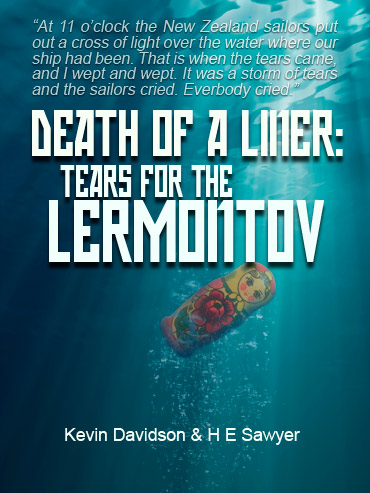
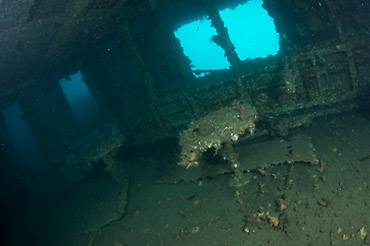
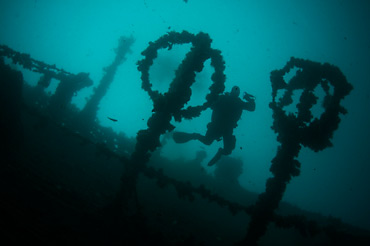
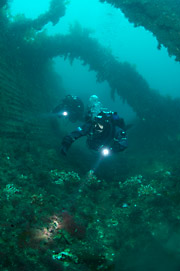 Having ignored the order to stand down, Captain Reedman brought the tanker 'Tarihiko' into play when he arrived at the scene at 8.45pm, and proceeded to take some passengers and crew aboard his vessel.
Having ignored the order to stand down, Captain Reedman brought the tanker 'Tarihiko' into play when he arrived at the scene at 8.45pm, and proceeded to take some passengers and crew aboard his vessel. 